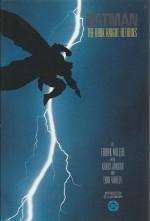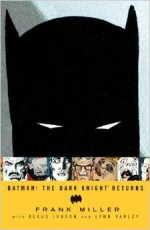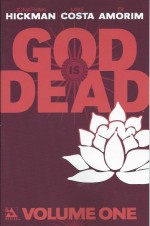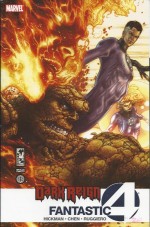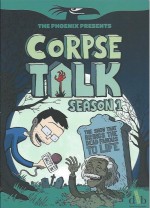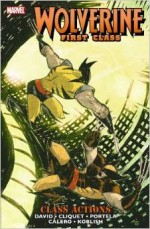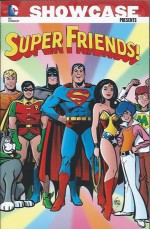
By E. Nelson Bridwell, Denny O’Neil, Ric Estrada, Joe Orlando, Ramona Fradon, Kurt Schaffenberger, Bob Smith & Vince Colletta (DC Comics)
ISBN: 978-1-4012-4757-7
Once upon a time comics were primarily created with kids in mind and, whilst I’d never advocate exclusively going back to those days, the modern industry is greatly lacking for not properly addressing the needs and tastes of younger fans these days.
A superb case in point of all-ages comics done right can be seen in Showcase Presents Super Friends volume 1 which gathers the licensed comicbook tales which spun off from a popular Saturday Morning TV Cartoon show: one that, thanks to the canny craftsmanship and loving invention of lead scripter E. Nelson Bridwell, became an integral and unmissable component of the greater DC Universe.
It was also one of the most universally thrilling and satisfying superhero titles of the period for older fans: featuring the kind of smart and witty, straightforward adventures people my age grew up with, produced during a period when the entire industry was increasingly losing itself in colossal continued storylines and angsty, soap opera melodrama.
Sometimes all you really want is a smart plot well illustrated; sinister villains well-smacked, a solid resolution and early bed…
The TV show Super Friends ran (under various iterations) from 1973 to 1986; starring Superman, Batman and Robin, Wonder Woman, Aquaman and a brace of studio-originated kids as student crimebusters, supplemented by occasional guest stars from the DCU on a case by case basis.
The series then made the transition to print as part of the publisher’s 1976 foray into “boutiqued†comics which saw titles with a television connection cross-marketed as “DC TV Comicsâ€.
Child-friendly Golden Age comicbook revival Shazam!- the Original Captain Marvel had been adapted into a successful live action television series and its Saturday Morning silver screen stablemate The Secrets of Isis consequently reversed the process by becoming a comicbook.
With the additions of hit comedy show Welcome Back Kotter and animated blockbuster Super Friends into four-colour format, DC had a neat little outreach imprimatur tailor-made to draw viewers into the magic word of funnybooks.
At least that was the plan: with the exception of Super Friends none of the titles lasted more than ten issues beyond their launch…
This bombastic black-&-white extravaganza collects Super Friends #1-24 (spanning November 1976 to September 1979) and opens with a crafty two-part caper by Bridwell, Ric Estrada, Vince Colletta & Joe Orlando.
‘The Fury of the Super Foes’ found heroes-in-training Wendy and Marvin – and their incredible astute mutt Wonderdog – studying at the palatial Hall of Justice, even as elsewhere a confederation of villains prove that imitation is the sincerest form of flattery if not outright intellectual theft…
The Penguin, Cheetah, Flying Fish, Poison Ivy and Toyman, having auditioned a host of young criminals, are creating a squad of sidekicks and protégés to follow in their felonious footsteps and Chick, Kitten, Sardine, Honeysuckle and Toyboy are all ready and willing to carry out their first caper.
When the giant “Troubalert†screen informs the heroes of a three-pronged attack on S.T.A.R. Labs’ latest inventions, the champions split up to tackle the crises but are thoroughly trounced until Wendy and Marvin break curfew to help them.
As a result of the clash, Chick and Kitten are brought back to the Hall of Justice, but their talk of repentance is a rascally ruse and they secretly sabotage vital equipment…
Unluckily for them Wonderdog has seen everything and quickly finds a way to inform the still-oblivious good guys in issue #2 but too late to prevent the Super Friends being briefly ‘Trapped by the Super Foes’…
The incomparable Ramona Fradon – aided and abetted by inker Bob Smith – took over the pencilling with #3 as ‘The Cosmic Hit Man?’ saw fifty intergalactic super-villains murdered by infernal Dr. Ihdrom, who then combined their harvested essences to create an apparently unbeatable hyper-horror who utterly overwhelmed Earth’s heroic defenders. However he soon fell victim to his own arrogance and Wendy and Marvin’s logical deductions…
‘Riddles and Rockets!’ found the Super Friends overmatched by new ne’er-do-well Skyrocket whilst simultaneously trying to cope with a rash of crimes contrived by King of Conundra The Riddler.
It wasn’t too long before a pattern emerged and a criminal connection was confirmed…
Author Bridwell was justly famed as DC’s keeper of the continuity, possessing an astoundingly encyclopaedic knowledge of DC’s publishing minutiae. ‘Telethon Treachery!’ gave him plenty of scope to display it with a host of near-forgotten guest-stars joining our heroes as they hosted a televised charity event whilst money-mad menace Greenback lurked in the wings, awaiting the perfect moment to grab the loot and kidnap the wealthiest donators…
The Atom played a crucial role in stopping the dastardly depredations of an animal trainer who used beasts as bandits in ‘The Menace of the Menagerie Man!’ before a huge cast change was unveiled in #7 (October 1977) with ‘The Warning of the Wondertwins’…
TV is very different from comics. When the new season of Super Friends aired, Wendy, Marvin and Wonderdog were gone, replaced without warning or explanation by alien shapeshifters Zan and Jayna and their elastic-tailed space monkey Gleek.
With more room – and consideration for the fans – Bridwell turned the sudden cast change into a bombastic battle to save Earth from total annihilation whilst properly introducing the adult heroes’ newest students in memorable style…
At the Hall of Justice Wendy and Marvin spot a spaceship hurtling to Earth on the Troubalert monitor and dash off to intercept it. Aboard are two siblings from distant planet Exor: a girl who can change into animals and a boy who can become any form of water from steam to ice. They have come with an urgent warning…
Superman’s alien enemy Grax has determined to eradicate humanity and devised a dozen different super-bombs and attendant weird-science traps to ensure his victory. The weapons are scattered all over Earth and even the entire Justice League cannot stretch its resources to cover every angle and threat…
To Wendy and Marvin the answer is obvious: call upon the help and knowledge of hyper-powered local heroes…
Soon Superman and Israel’s champion The Seraph are dismantling a black hole bomb whilst Elongated Man and titan-tressed Godiva are performing similar duties on a life-eradicator in England and Flash and mighty-leaping Impala are dismantling uncatchable ordnance in South Africa…
Hawkman and Hawkwoman then join Native American avenger Owlwoman to crush darkness-breeding monsters in Oklahoma whilst from the Hall of Justice Wendy, Marvin and the Wondertwins monitor the crisis with a modicum of mounting hope…
The cataclysmic epic continues in #8 with ‘The Mind Killers!’ as Atom and Rising Son tackle a deadly device designed to decimate Japan even as in Ireland Green Lantern and Jack O’Lantern battle multi-hued monstrosities before switching off their target of technological terror.
In New Zealand time-scanning Tuatara tips off Red Tornado to the position of a bomb cached in the distant past and Venezuela’s doom is diverted through a team-up between Batman and Robin and reptile-themed champion Bushmaster whilst Taiwan benefits from a melding of sonic superpowers possessed by Black Canary and the astounding Thunderlord…
The saga soars to a classic climax with ‘Three Ways to Kill a World!’ in which the final phases of Grax’s scheme finally fail thanks to Green Arrow and Tasmanian Devil in Australia, Aquaman and Little Mermaid in the seas off Denmark and Wonder Woman and The Olympian in Greece.
Or at least they would have if the Hellenic heroes had found the right foe. Sadly their triumph against Wrong-Place, Right-Time terrorist Colonel Conquest almost upset everything. Thankfully the quick thinking students send an army of defenders to Antarctica where Norwegian novice Icemaiden dismantles the final booby-trap bomb.
However, whilst the adult champions are thus engaged, Grax invades the Hall of Justice seeking revenge on the pesky whistleblowing Exorian kids, but is completely unprepared for and overwhelmed by Wendy, Marvin and Wonderdog who categorically prove they are ready to graduate to the big leagues…
With Zan and Jayna enrolled as the latest heroes-in-training, Super Friends #10 details their adoption by Batman’s old associate – and eccentric time travel theoretician – Professor Carter Nichols just before a legion of alien horrors arrives on Earth to teach the kids that appearances can be lethally deceiving in ‘The Monster Menace!’ after which Kingslayer’ pits the heroes against criminal mastermind Overlord who has contracted the world’s greatest hitman to murder more than one hundred leaders at one sitting…
Another deep dive into DC’s past then resurrected Golden Age titans T.N.T and Dan, the Dyna-Mite in ‘The Atomic Twosome!’
The 1940s mystery men had been under government wraps ever since their radioactive powers began to melt down, but when an underground catastrophe ruptured their individual lead-lined vaults, the Super Friends were called in to prevent a potential nuclear nightmare…
The subterranean reason for the near tragedy was tracked to a monstrous mole creature, and led to the introduction of eternal mystic Doctor Mist who revealed the secret history of civilisation and begged help to halt ‘The Mindless Immortal!’ before its random burrowing shattered mankind’s cities…
Super Friends #14 opened with ‘Elementary!’; introducing four ordinary mortals forever changed when they were possessed by ancient sprits and tasked with plundering the world by Overlord. When the heroes scotched the scheme, Undine, Salamander, Sylph and Gnome retained their powers and determined to become a crime-fighting team dubbed The Elementals…
The issue also contained a short back-up tale illustrated by Kurt Schaffenberger & Bob Smith. ‘The Origin of the Wondertwins’ at last revealed how the Exorian genetic throwbacks – despised outcasts on their own world – fled from a circus of freaks and uncovered Grax’s plot before taking that fateful rocketship to Earth…
Big surprises were in store in ‘The Overlord Goes Under!’ (Fradon & Smith) as the Elementals began their battle against evil by joining the Super Friends in crushing the crimelord. All the heroes were blithely unaware that they were merely clearing the way for a far more cunningly subtle mastermind to take Overlord’s place…
‘The People Who Stole the Sky!’ in #16 was a grand, old fashioned alien invasion yarn, perfectly foiled by the team and the increasingly adept Wondertwins whilst ‘Trapped in Two Times!’ found Zan and Jayna used by the insidious Time Trapper (nee Time Master) to lure the adult heroes into deadly peril on Krypton in the days before it detonated and future water world Neryla in the hours before it was swallowed by its critically expanding red sun.
After rescuing the kids – thanks in no small part to Superman’s legendary lost love Lyla Ler-rol – the Super Friends used Tuatara’s chronal insight and Professor Nichol’s obscure methodologies to go after the Trapper in the riotous yet educational ‘Manhunt in Time!’ (illustrated by Schaffenberger & Smith), by way of Atlantis before it sank, medieval Spain and Michigan in 1860AD, to thwart a triple-strength scheme to derail history and end Earth civilisation…
Issue #19 saw the return of Menagerie Man in ‘The Mystery of the Missing Monkey!’ (Fradon & Smith) as the beast-breaker boosted Gleek, intent on turning his elastic-tailed talents into the perfect pickpocketing tool, after which Denny O’Neil – writing as Sergius O’Shaugnessy – teamed with Schaffenberger & Smith for a more jocular turn.
Chaos and comedy ensued when the team tackled vegetable monsters unleashed when self-obsessed shlock-movie director Frownin’ Fritz Frazzle got hold of Merlin’s actually magical Magic Lantern and tried to make a masterpiece on the cheap in ‘Revenge of the Leafy Monsters!’…
Bridwell, Fradon & Smith were back in #21 where ‘Battle Against the Super Fiends!’ found the heroes travelling to Exor to combat a brace of super-criminals who could duplicate all their power-sets, after which ‘It’s Never Too Late!’ (#22, O’Neil, Fradon & Smith) revealed how temporal bandit Chronos subjected the Super Friends to a time-delay treatment which made them perennially too late to stop him – until Batman and the Wondertwins out-thought him…
The Mirror Master divided and banished teachers and students in #23 but was unable to prevent an ‘SOS from Nowhere!’ (Bridwell, Fradon & Smith) to the fleet-footed Flash. This episode also spent some time fleshing out the Wondertwin’s earthly secret identities as Gotham Central highschoolers John and Joanna Fleming…
This splendid selection of super thrills then concludes with ‘Past, Present and Danger!’ by O’Neil, Fradon & Smith wherein Zan and Jayna’s faces are found engraved on a recently unearthed Egyptian pyramid. Upon investigation inside the edifice, the heroes awaken two ancient exiles who resemble the kids, but are in fact criminals who have been fleeing Exorian justice for thousands of years.
How lucky then that the kids are perfect doubles the crooks can send back with the robot cops surrounding the pyramid – once they’ve got rid of the Earthling heroes…
Brilliantly entertaining, masterfully crafted and always utterly engaging, these stories are comics gold that will delight children and adults in equal proportion. Truly generational in appeal, they are probably the closest thing to an American answer to the magic of Tintin or Asterix and no family home should be without this tome.
© 1976, 1977, 1978, 1979, 2014 DC Comics, Inc. All Rights Reserved.



